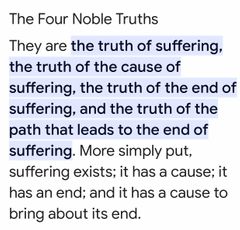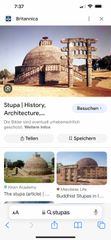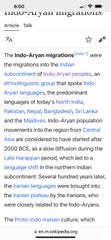![]()
![]()
![]()
Use LEFT and RIGHT arrow keys to navigate between flashcards;
Use UP and DOWN arrow keys to flip the card;
H to show hint;
A reads text to speech;
51 Cards in this Set
- Front
- Back
- 3rd side (hint)
|
Indo-Aryan Civilization |
Location- Ganges River Plain They wrote the 4 vedas (books of sacred hymns written in Sanskrit What we know comes from Vedas |
|
|
|
Caste |
Social class based on birth with strict rules of behavior |
|
|
|
Varnas |
Caste groupings based on skill Top are the Brahmins (priest) |
|
|
|
Jati |
Caste groupings based on occupation |
|
|
|
Untouchables |
Outside the caste, low social status, work considered impure |
Like if they work with hide/leather which was not considered pure they belonged there or if they were a child from an unmarried couple for example |
|
|
Hinduism |
How it began: Brahmanism-focused on priests limited to rituals |
|
|
|
Brahman |
God(s) -one supreme being or spiritual force Source of all things All gods are a form of Brahman |
|
|
|
Sacred texts |
Vedas : 4 books of sacred hymns in Sanskrit by Indo-Aryans Upanishads : writings of the gurus - connections to peoples lives Bhagavad-Gita : part of epic poem Mahabharata |
|
|
|
Vedas |
4 Books of sacred hymns written in Sanskrit by Indo Aryans |
|
|
|
Upanishads |
Writings by gurus Connection to peoples lives |
|
|
|
Bhagavad Gita |
Part of epic poem Mahabharata |
|
|
|
Goal of Hinduism |
By following your dharma (path) and doing good deeds (kharma), you can end the cycle of reincarnation and your soul will rejoin Brahman (moksha) |
|
|
|
Guru |
Hindu teacher, thought and discussed religious ideas |
|
|
|
Dharma |
A person‘s duty or righteous action |
|
|
|
Karma |
Effect of a person‘s action in this and in previous lives |
|
|
|
Reincarnation |
Rebirth of a soul in a new body |
|
|
|
Moksha |
Liberation from reincarnation Soul rejoins Brahman |
|
|
|
Buddhism - no gods |
How it began: pampered Hindu prince Siddharta Gautama discovered suffering in the world and left to find the truths about life, suffering and death |
|
|
|
Sacred texts of Buddhism |
The teachings of Buddha recorded by his students |
|
|
|
Goal of Buddhism |
To live the Middle Way by accepting the 4 Noble Truths and following the Eightfold Path to reach Nirvana |
|
|
|
4 Noble Truths |
Life is suffering (Caused by by selfishness) You can end suffering You can give up suffering by giving up selfish desires (by following the Eightfold path) Nirvana is the end |

|
|
|
Eightfold Path |
8 steps to develop 3 qualities to reach enlightenment- Wisdom Morality Meditation |
|
|
|
Buddha |
The enlightened one |
|
|
|
Enlightenment |
A state of perfect wisdom |
|
|
|
Nirvana |
A state of blissful peace No desire or suffering |
|
|
|
Monasteries |
Religious communities Place to study and meditate |
|
|
|
Missionaries |
Spread Buddha‘s teachings throughout SE Asia |
|
|
|
Mauryan Empire 1st emporer |
How it began: Brahmin Kautikya helped Chandragupta drive out Greek invaders |
|
|
|
Chandragupta |
Brilliant military leader Constant fear of his enemies- spy network Many of his ideas came from his advisor Kautilya Who Wrote Arthrashastra - a book about how to rule |
|
|
|
Important facts |
Well trained soldiers with India bow 1st state to rule all of North India Government- 4 provinces-each with own governor (bureaucracy like the Persians) Taxes - crops and sales tax - payment to government workers and army End - Chandragupta became a Jain, might have left to join monastery |
|
|
|
Mauryan Empire 3rd emporer |
How it began: Asoka might have killed his own brother to gain power |
|
|
|
Asoka the leader |
He won a costly war against the Kalinga- so shocked by the war he embraced Buddhist ideals He ruled for 40 years during which time he improves the life of the people |
|
|
|
Important facts Mauryan 3rd emporer |
Rule by dharma (a person’s duty or righteous actions) instead of rule by force A time of peace and prosperity Excellent road system that promoted trade with the empire Constructed large stone columns around empire with new messages End: Asoka died and empire weakened lost part of the empire Eventually the final Mauryan ruler was murdered |
|
|
|
Ahimsa |
Against harming living things |
|
|
|
Stupas |
Commemorative Buddhist burial mounds |

|
|
|
Gupta Empire |
How it began: reunited northern India, 500 years after the Mauryans |
|
|
|
Chandra Gupta I |
Controlled the Ganges Basin |
|
|
|
Chandra Gupta II |
Grandson Grew empire to its largest size |
|
|
|
Important facts about Gupta Empire |
Kalidasa (author) - plays, poetry and fables in Sanskirt Invented chess Decimal system - concept of zero and units of 10 Ayurveda - system of medicine to treat different diseases and medical problems Iron Pillar of Delhi - tall column from a single piece of iron government - relied instead on local leaders instead of representatives of the (like the Mauryan) |
|
|
|
Brahman vs Brahmin |
Brahman is the almighty God the god of gods. When you reach Moksha you become one with him. The ultimate goal. Brahmin is the upper caste where the priests and teacher belong |
|
|
|
Indus Valley Civilization |
Location - Indus & Saraswati River Important facts - India's 1st civilization -what we know comes from archaeological sites like Mohenjo-Daro & Harappa -well planned cities - 1st citywide sewer |
|
|
|
Indus Valley Civilization |
Location - Indus & Saraswati River Important facts - India's 1st civilization -what we know comes from archaeological sites like Mohenjo-Daro & Harappa -well planned cities - 1st citywide sewer |
|
|
|
Monsoon |
Seasonal winds that bring rain in the summer Agriculture depended on it |
|
|
|
Indus Valley Civilization |
Location - Indus & Saraswati River Important facts - India's 1st civilization -what we know comes from archaeological sites like Mohenjo-Daro & Harappa -well planned cities - 1st citywide sewer |
|
|
|
Monsoon |
Seasonal winds that bring rain in the summer Agriculture depended on it |
|
|
|
Citadel |
Fortified area Center of government, religion or both Refuge if the city flooded, usually built on top of an elevation |
|
|
|
Indus Valley Civilization |
Location - Indus & Saraswati River Important facts - India's 1st civilization -what we know comes from archaeological sites like Mohenjo-Daro & Harappa -well planned cities - 1st citywide sewer |
|
|
|
Monsoon |
Seasonal winds that bring rain in the summer Agriculture depended on it |
|
|
|
Citadel |
Fortified area Center of government, religion or both Refuge if the city flooded, usually built on top of an elevation |
|
|
|
Granary |
Special building to hold surplus grain |
|
|
|
Aryans |

Back (Definition) |
|

